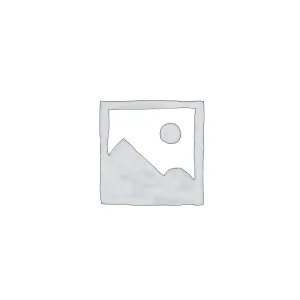Understanding the Recent Posts Function and Shortcode
The ‘Recent Posts’ function and shortcode in WordPress are valuable tools designed to enhance the way content is displayed on your website. These features enable users to showcase the latest articles or posts dynamically without needing to modify the underlying design or structure of their site. This guide will delve into what the ‘Recent Posts’ function is, how to use the shortcode effectively, and the various customizations you can implement to suit your website’s needs.
Development
What is the Recent Posts Function?
The ‘Recent Posts’ function is a built-in WordPress feature that retrieves the most recent posts from your site and displays them, often in sidebar widgets or within the main content area. This function is essential for keeping your audience engaged and informed about your latest content offerings. It utilizes a straightforward query to pull the latest posts based on a specified set of parameters, such as post count, post type, and more.
To make this functionality accessible to developers and users, WordPress provides a shortcode, allowing users to add the ‘Recent Posts’ function to any post or page easily. Shortcodes are small codes enclosed in brackets that trigger specific functionalities without needing any coding knowledge.
How to Use the Shortcode
Utilizing the ‘Recent Posts’ shortcode is simple and straightforward. The standard format for the shortcode is as follows:
[recent_posts]
This will use the default parameters to show a list of the latest posts. However, one of the greatest advantages of using shortcodes is the ability to customize the display settings further based on your requirements.
For example, the shortcode allows for several parameters that can be integrated to refine what you want to display. Some commonly used parameters include:
-
number: This parameter allows you to define how many recent posts you wish to display. For example,
[recent_posts number="5"]will display the five latest posts. -
category: This parameter can filter to show recent posts from a specific category. For instance,
[recent_posts category="news"]will show recent posts only from the ‘news’ category. -
orderby: This parameter allows you to order posts by specific criteria, such as date or title. An example would be
[recent_posts orderby="title"], which would order the posts alphabetically. -
include_date: This parameter lets you include specific dates along with the post titles. You could use
[recent_posts include_date="true"]to show dates next to each post title.
Examples of Customization
One of the beauties of the ‘Recent Posts’ function is its flexibility. Suppose you have a blog that covers multiple topics. You can show different recent posts on various pages. For instance:
-
Home Page:
You may want a block of the latest five posts to catch visitor attention:
[recent_posts number="5"] -
Category Page:
To focus on a particular subject, such as ‘Travel,’ you can define:
[recent_posts category="travel" number="3"] -
Custom Layouts:
You can get creative and mix the ‘Recent Posts’ function with other design elements using page builders. By wrapping the shortcode with HTML or CSS classes, you can integrate this functionality into a more visually appealing structure.
Advanced Tips
If you’re looking to take your recent posts display to the next level, consider the following advanced techniques:
-
Styling with CSS: Customize the appearance of the recent posts using CSS styles. You can target the output of the shortcode, offering a cohesive design that blends with your existing theme.
-
Integration with Page Builders: Tools like Elementor or Beaver Builder provide functionalities that enable a more visual approach to displaying the recent posts, allowing you to add animations, different layouts, and advanced design elements.
-
Pagination: If you have many recent posts, consider implementing pagination so that users can navigate through more posts easily. This feature can enhance user experience significantly.
Considerations for SEO
While using the ‘Recent Posts’ function, keeping SEO best practices in mind is essential. Here are some points to consider:
-
Descriptive Titles: Ensure that post titles are descriptive, engaging, and include keywords relevant to your target audience.
-
Meta Descriptions: While the shortcode will often take the first few lines of your post for display, ensure those lines are optimized and enticing so that users are encouraged to click through.
-
Use of Structured Data: Implementing schema.org markup where applicable can enhance the display of your posts in search results, potentially improving click-through rates.
Troubleshooting Common Issues
Occasionally, issues may arise when using the ‘Recent Posts’ function or shortcode. Some of the common issues include:
-
Shortcode Not Working: Ensure that the shortcode is entered correctly without any typing errors. Remember that shortcodes should not be added in HTML mode; they should be used in the visual editor.
-
Conflicts with Themes or Plugins: Sometimes, conflicts with particular themes or plugins may cause display issues. If you’re experiencing problems, try temporarily disabling other plugins to identify the source of the conflict.
-
Styling Issues: If the output does not conform to your design expectations, inspect the CSS styles applied to the elements. Custom CSS can often resolve formatting problems.
Conclusion
The ‘Recent Posts’ function and shortcode in WordPress provide the perfect means to keep your audience engaged by displaying fresh content. With easy customization options, it’s an essential tool for site administrators looking to leverage the latest content effectively. From simple shortcode configurations to advanced styling and integration techniques, understanding how to utilize this function can significantly enhance user experience and engagement on your site.
Beyond keeping your audience informed about recent updates, this feature also fosters an environment that encourages interaction and exploration, ultimately leading to increased traffic and improved SEO performance. So, whether you’re a beginner or an advanced user, embracing the ‘Recent Posts’ function and shortcode can undoubtedly be a game-changer in your WordPress journey.
Recent Posts function and Shortcode: Download for Free on OrangoGPL
Indeed, downloading Recent Posts function and Shortcode for Free is viable and perfectly law-abiding.
Moreover, even downloading a cracked Recent Posts function and Shortcode is law-abiding, as the license it is distributed under is the General Public License, and this license enables the user all kinds of code modifications.
So, there’s no cause to worry: If you were in search of to buy Recent Posts function and Shortcode cheaply or, directly, to download Recent Posts function and Shortcode Plugins nulled to obtain it one hundred percent free,, it’s possible within the law.
Recent Posts function and Shortcode GPL: The only solution for startup entrepreneurs
Call it as you prefer: Recent Posts function and Shortcode deals, download Recent Posts function and Shortcode Plugins GPL, download Recent Posts function and Shortcode without license or download Recent Posts function and Shortcode nulled.
It is something entirely law-abiding and something more than necessary for every new entrepreneur.





Reviews
There are no reviews yet.